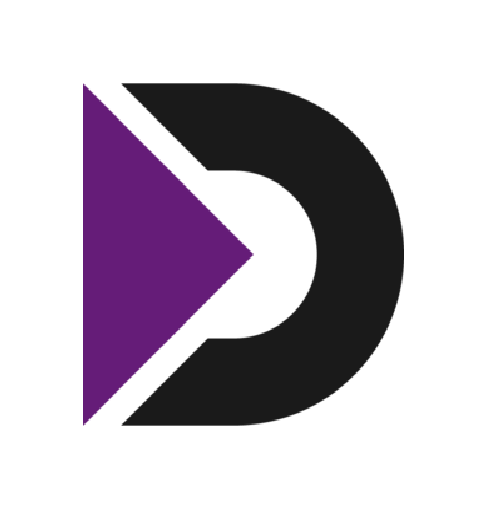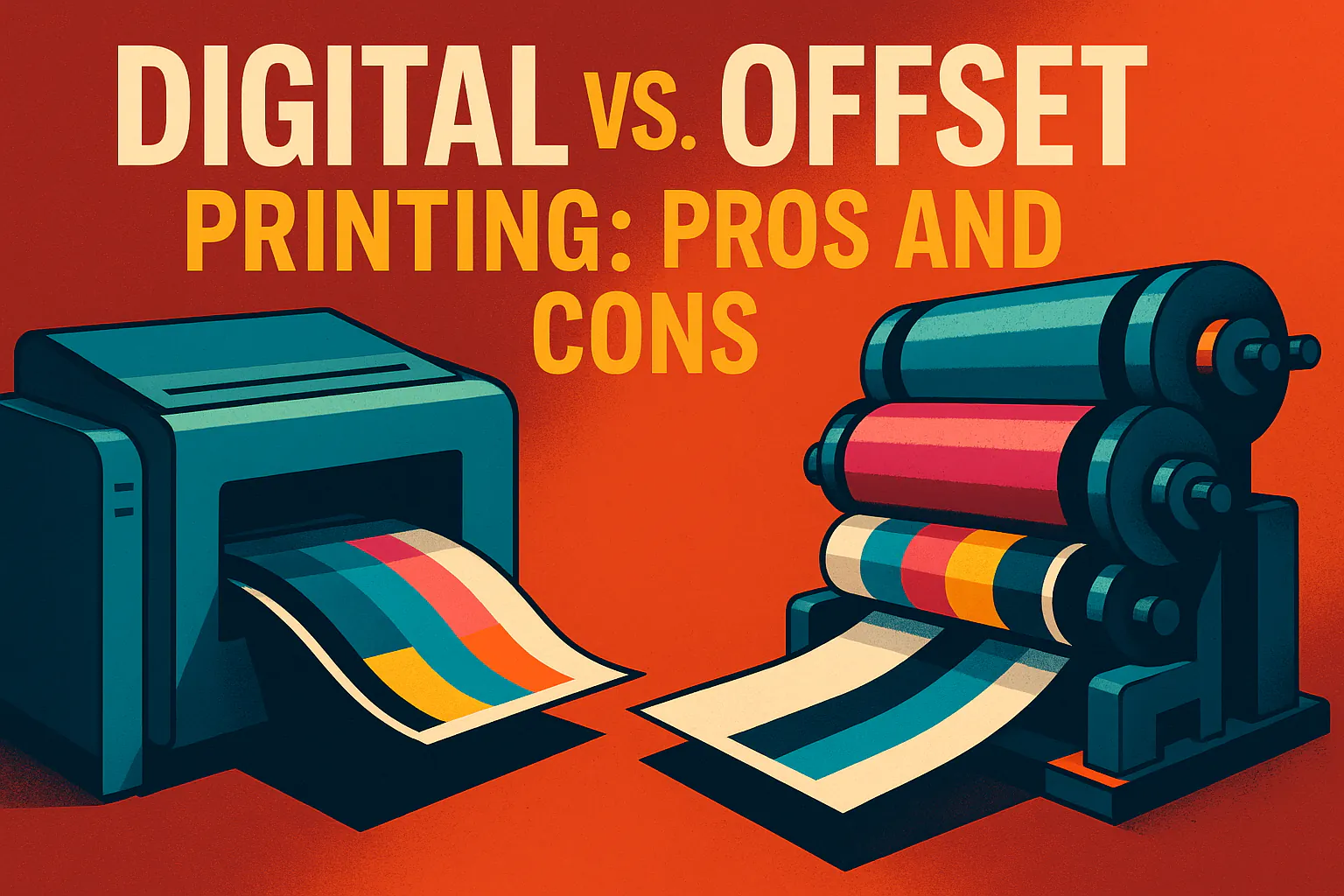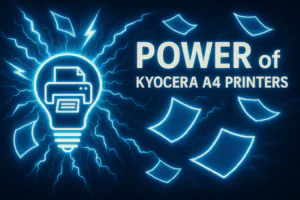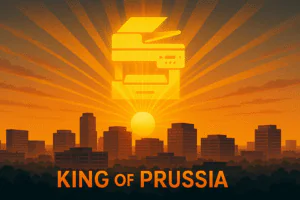Quick Summary
This article walks through the true differences between digital and offset printing, including how they work, where the break-even volume hits, which method fits variable data printing (VDP), how turnaround times compare, and what to expect when choosing stock or finishes. It also shows how Doceo’s Outsourced Printing Services can help you choose — and deliver — the right fit, or even a blend of both.
The Short Answer: Offset = Volume; Digital = Flexibility
Offset and digital printing both produce high-quality printed materials, but they serve different needs.
Offset uses metal plates to transfer ink to a rubber blanket, then to the paper. It’s ideal for large, consistent runs because the setup cost is high—but the per-piece cost drops significantly as volume increases.
Digital printing works like a sophisticated laser printer: it applies toner or ink directly to the paper. No plates, no long setup, which means faster turnaround and more flexibility for short runs or customized content.
Doceo Pro Tip:
If your piece includes personalization—like recipient names or segmented offers—digital is your best bet. Offset can’t do variable data without switching plates.
What Counts as “High Volume,” and Why Does It Matter?
Here’s a quick scenario to ground it:
| A local business is printing 2,500 brochures for a regional campaign.
| A digital press quotes $0.48 per piece (fast, no setup).
| Offset quotes $0.28 per piece—but with a $400 setup fee.
| Break-even:
Offset shines once you cross that break-even volume. That point depends on:
- Number of versions (e.g., different offers or addresses)
- Paper stock and finishing needs
- Color fidelity requirements
- Lead time available
Doceo Pro Tip:
Ask your provider to show you the break-even math. A good partner will walk through the actual numbers—not just hand you a quote.
Pros and Cons: Offset vs. Digital
| Feature | Offset Printing | Digital Printing |
|---|---|---|
| Setup Time | Long (requires plate creation) | Short (files go straight to press) |
| Cost Efficiency | Better for high-volume jobs | Better for short runs/low volume |
| Turnaround Speed | Slower upfront, faster in run | Faster from file to finished piece |
| Variable Data (VDP) | Not feasible | Fully supported |
| Color Consistency | Excellent, especially on long runs | Very good, improving constantly |
| Stock & Finish Options | More expansive (coatings, spot UV) | More limited (but still strong) |
| Proofing | Slower; physical proof needed | Fast digital or hard proofs |
| Cost per Piece (Low Volume) | High | Lower |
When to Use Offset Printing
Offset is still the gold standard for:
- Print runs of 2,000+
- Color-sensitive materials (e.g., brand-critical catalogs)
- High-end finishes (spot UV, foil, embossing)
- Unusual stocks (textured paper, thick cover stock)
It’s also ideal when:
- You’re printing one version of a piece, in large quantity
- You need exact Pantone® color matching
- You have a few extra days for production
Use case:
A municipality prints 80,000 monthly billing statements on high-opacity stock.
Offset allows for faster per-piece cost and better ink coverage over long runs.
When Digital Printing Makes More Sense
Digital is the better fit when:
- You need fast turnaround—1–3 business days
- Each piece is personalized or versioned (VDP)
- Quantities are low-to-mid (typically under 1,500)
- You want to test a campaign before scaling
- You’re reordering frequently in smaller batches
It’s also great for:
- Event signage
- Sales sheets with dynamic content
- Short-run direct mail with custom offers
Mini-scenario:
A nonprofit sends 1,200 donor mailers with personalized names and giving tiers.
Digital VDP output avoids plate changes and cuts lead time by 40%.
What About Quality?
Both methods deliver sharp, professional output—but the differences show up under the microscope.
- Offset can deliver extremely fine detail and perfect color registration.
- Digital presses today (especially from vendors like Xerox and Canon) achieve very high resolution and consistency—even on coated stock.
In most business use cases, digital quality is more than sufficient—especially when speed and versioning are in play.
Turnaround: How Much Faster is Digital?
Digital printing skips setup, plates, and washdowns. That often translates to:
- Same-day or next-day proofs
- 1–3 business day production window (depending on quantity)
- Lower scheduling risk for tight timelines
Offset, while fast once it’s running, often requires 2–5 business days just to prep and plate.
| Simple rule:
- Need it fast or need it varied? Go digital.
- Need it big and consistent? Go offset.
What If You Need Both?
Some print jobs actually combine both methods:
- Offset for the base shell (static background)
- Digital for the personalized overlay (name, offer, QR code)
This hybrid model keeps unit cost down and supports VDP.
Doceo’s Outsourced Printing Advisors often recommend this for:
- Complex direct mail campaigns
- Utility bills with rotating inserts
- Loyalty program materials
ROI / Impact: Simple Math You Can Use
Here’s a simple cost model you can use to frame the decision:
Digital cost = (unit cost × quantity)
Offset cost = (setup fee) + (unit cost × quantity)
Example:
- Offset setup = $400
- Offset per-piece = $0.28
- Digital per-piece = $0.48
- Quantity = 2,000
Digital total = $960
Offset total = $960 → Break-even hits here. Over 2,000, offset saves you money. Under 2,000? Digital is faster and cheaper.
FAQs
What’s the main difference between digital and offset printing?
Offset uses plates and is more cost-effective at high volumes. Digital prints directly from files and is faster and better for short runs or variable data.
Is offset higher quality than digital?
Offset can offer more precise color control, but modern digital presses deliver excellent quality suitable for most professional use cases.
How do I know which method to choose?
It depends on quantity, turnaround, personalization, and stock. A Doceo Advisor can help you assess your options.
Can I do variable data printing (VDP) with offset?
Not practically. Digital is required for VDP because it doesn’t require changing plates for each piece.
Doceo offers both, right?
Yes—we support digital and offset production based on your project needs, volume, and timing .
Ready to Compare Options?
Talk to a Doceo Advisor about your next print project.
We’ll walk you through digital vs. offset based on your volume, timeline, and goals — and handle both as a service via Doceo’s Outsourced Printing Services, if needed.





